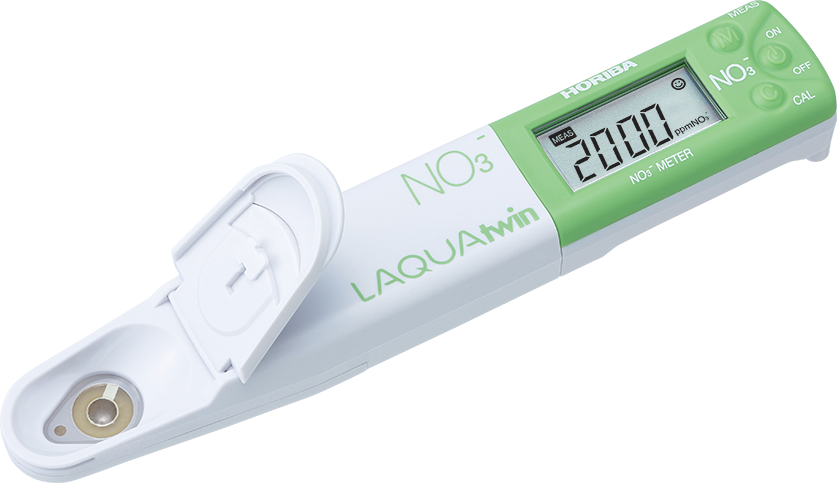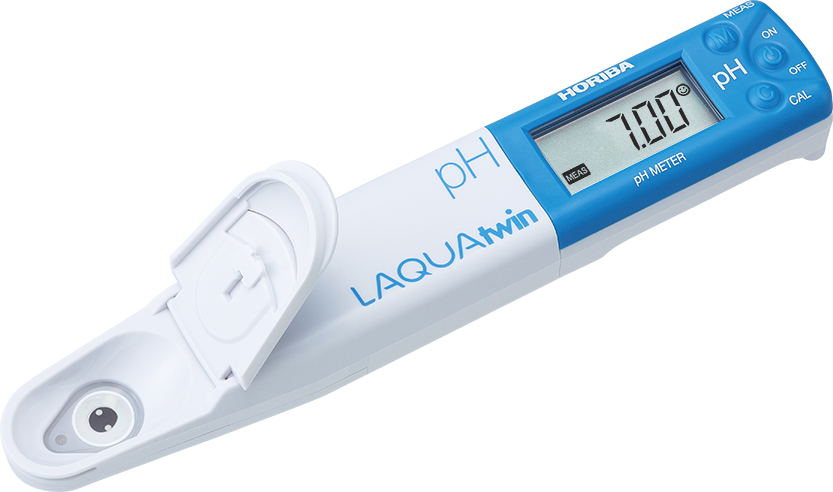HORIBA LAQUAtwin SALT meter
Examples of use:
Salinity is the measure of the amount of dissolved salts in water. It is usually expressed in parts per thousand (ppt) or percent (%).
The portable analyzer is used to measure saltwater, seawater and all concentrated salt solutions and is used in a variety of applications.
Soil analysis
Salt accumulates in the upper layer of soil. Salinization is one of the oldest problems of soil pollution, because it deprives agriculture of fertile soil. Insufficient rainfall and rising temperatures mean that cultivated areas have to be irrigated artificially. But unlike rainwater, groundwater or surface water always contains a certain amount of salt. Since water evaporates quickly at high temperatures, the salt remains as a residue on the surface if, at the same time, the soil is not sufficiently flushed by low or no precipitation.
The consequence of too high a salt concentration is then, among other things, crop failure and a correspondingly low crop yield.
Therefore, the irrigation water should only have a low to medium salt content, which can be determined quickly and easily on site by hand measurement with the Pocket Tester of the Horiba LAQUAtwin Salt Content Tester series (Salt-11).
Aquaristics
In aquaristics, the salinity of the aquarium water must be as close to natural as possible in order to provide animals and plants with as natural a habitat as possible. In order to maintain constant and optimal conditions, the salt content of the aquarium water must therefore be checked continuously. Especially when tap water, which already contains dissolved salts, is independently enriched with a salt mixture, the follow-up control of the concentration plays an important role for the well-being and survival of all marine aquarium inhabitants.
Fish farming
In fish farming, water quality is particularly crucial for breeding success, so continuous monitoring of various parameters is also required here. With the help of the Pocket Tester from Horiba, the salt content, among other things, can be easily and precisely logged. Unwanted changes in water quality can be quickly detected and countermeasures can be taken.
Food industry
According to the Food Information Regulation (LMIV), specific nutritional information must be provided on pre-packaged foods - including salt content.
Manufacturers can easily ensure this by chemically analyzing their products with the Horiba handheld meter, as precise measurement results are obtained and the measurement procedure is simple, fast and straightforward.
Since the Horiba LAQUAtwin can be stored in a dry place without its sensor drying out, it makes it very uncomplicated to use.
In addition, all Horiba LAQUAtwin pockettester are dustproof and waterproof.
Application information
- Minimum sample volume: 0.12 ml
- Display of salinity and temperature
- Up to 2 calibration points
- Automatic calibration
- Automatic standard detection: 0.50 & 5.00 % NaCl
- Automatic temperature compensation: 2% / ºC fixed
- Temperature calibration: 5 to 40.0 ºC
- 2 salinity curves: NaCl & seawater
- Automatic stability / auto hold measurement
- Auto power off: 30 minutes.
- Low battery indicator
- IP67 rating dust and waterproof
- Replaceable sensor
- 400 hours battery life: continuous operation without backlighting
- Material: ABS epoxy body & titanium coated with platinum black sensor
- Display: custom (monochrome) digital LCD with backlight
- Operating conditions: 5 to 40 °C, 85% or less relative humidity
- Warranty: 2 years - meter, 6 months - sensor
- Packed in convenient carrying case
- Supplied with 0.5% & 5.0% NaCl standards (14ml each), conditioning solution (4ml), 2 x CR2032 batteries, dropper, operating instructions and quick reference guide





